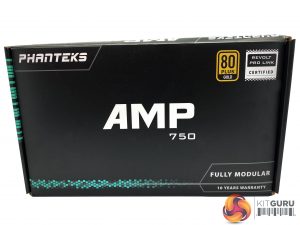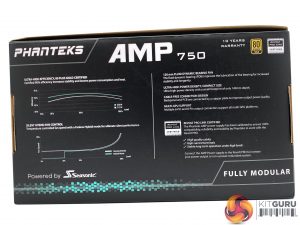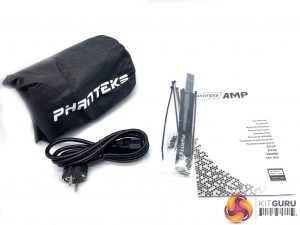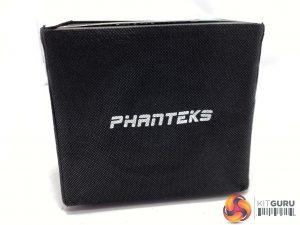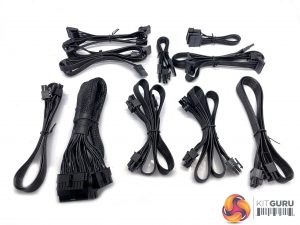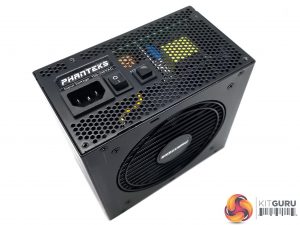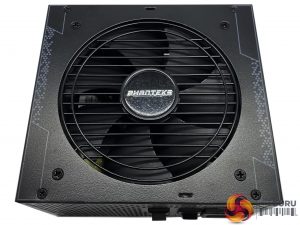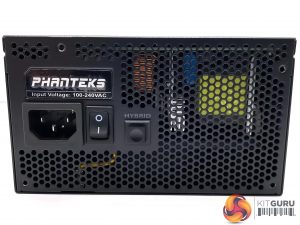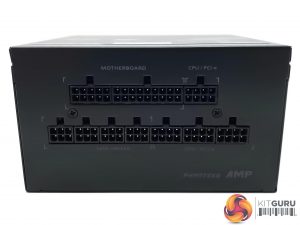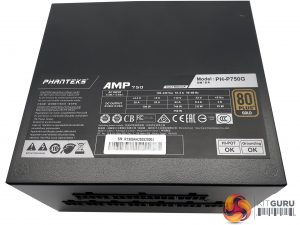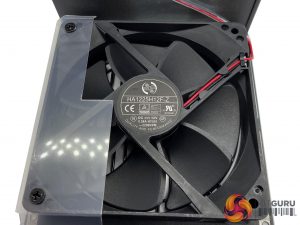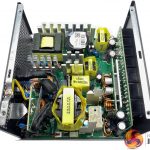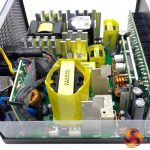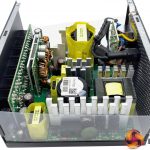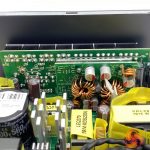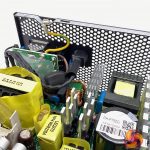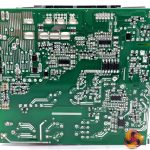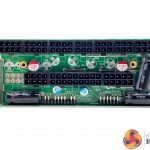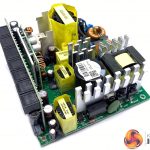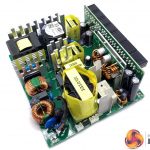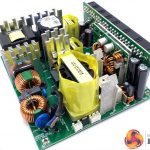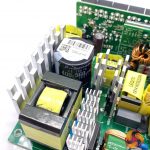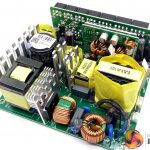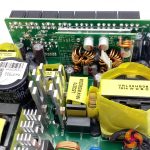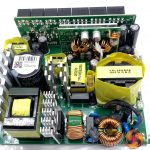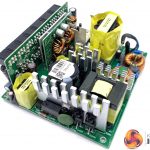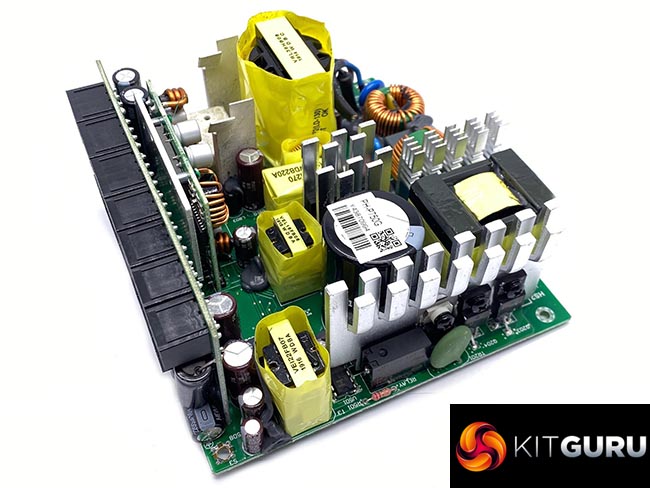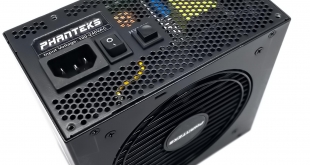
Phanteks have proven very successful in the case sector of the market, and today we take a look at one of their new power supplies from their latest ‘AMP' range. These power supplies are 80 Plus Gold certified, fully modular and ship with a 10 year warranty.
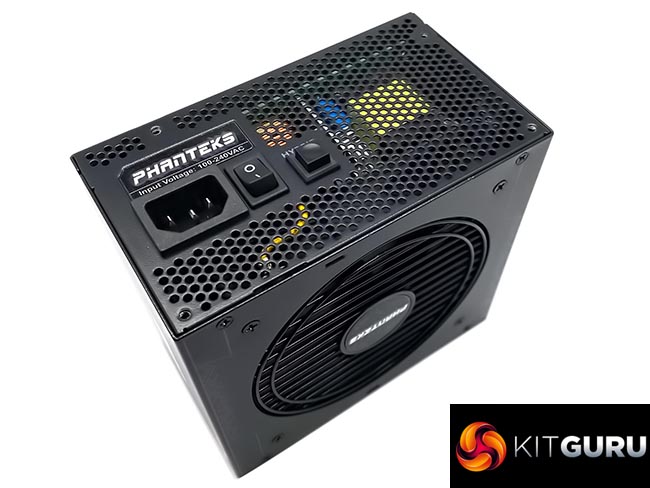
Phanteks may not be a name that immediately springs to mind when you are looking at buying a new power supply. Even though I feel the market is somewhat saturated right now it is clear that there are sales to be made, considering how many companies are releasing new models in 2019.
At the end of the day, success is based around getting the price competitive and using a suitable OEM partner. Phanteks have opted for Seasonic, and we will take a closer look at the design when we open the unit later in the review.
Phanteks are selling three capacities in this range – a 550W, 650W and 750W unit. We are looking at the highest capacity 750 watt model today.
THE FEATURES OF THE PHANTEKS AMP 750W POWER SUPPLY AT A GLANCE:
- 750 Watt PSU with powerful 62A single rail
- High efficiency thanks to 80 PLUS Gold certification
- Quiet 120 mm fan with semi-passive mode
- Fully modular cable management with flat cables
- Four 6+2-pin PCIe connectors for graphics cards
- Compatible with Revolt Pro Link
The Phanteks box artwork isn't exactly ground breaking, but they document some key selling points – its fully modular, its 80 Plus Gold Certified and its compatible with Revolt Pro Link.
The PHANTEKS AMP 750W is certified for use with the Revolt Pro Link and can be used in conjunction with a Revolt Pro power supply. PHANTEKS equips the Revolt Pro-series of power supplies with 24-pin- and 8-pin connectors that allow a second Revolt Pro-series- or AMP-series power supply to be connected. You can find more information on this, over HERE.
Phanteks list some more key selling points on the back of the box, including the 120mm Fluid bearing fan, compact size, multi GPU support, and the fact it is Revolt Pro Link Certified.
Inside, along with the power supply – is a user manual, cable ties, regional power cable and a bag of modular cables.
The power supply is wrapped inside a bag.
Cables:
1x 24-Pin
2x 4+4-Pin
4x 6+2-Pin-PCIe
8x SATA
3x 4-Pol-Molex
1x Adapter 4-pin Molex to 2x SATA
The majority of the cables are ribbon style for ease of routing. The main ATX cable is sleeved.
The Phanteks AMP 750 is nicely finished, and measures 150 x 86 x 140 mm (WxHxD).
The fan is hidden behind a metal grill, we will take a closer look at this fan shortly. We quite like the subtle patterning across the top of the PSU.
One side of the power supply is vented for air flow, with a power connector, power switch, and Hybrid fan button.
The modular bay consists of two rows with the motherboard and CPU connectors on the top row, with the SATA/MOLEX and PCIe connectors along the bottom row.
| Phanteks AMP 750 Power Supply | |||||
|
DC Output
|
+3.3V
|
+5V
|
+12V |
-12V
|
+5Vsb
|
|
Max Output
|
20A
|
20A
|
62A |
0.3A
|
3.0A
|
| Total Power | 100W | 744W | 3.6W | 15W | |
| 750W | |||||
The unit is capable of delivering 62A across the +12V rail, delivering 744 Watts.
Phanteks have opted for a Hong Hua 120mm fan (Model number HA1225H12F-Z). This is a Fluid Dynamic Bearing fan for quiet operation and long life. It is rated 0.58A, at 12 VDC. Maximum speed is rated at 2,200rpm, producing 73.9CFM at 32.4dBa. You will notice the unusually cut plastic cover along the left side of the fan – this is to direct the air flow at specific parts of the power supply underneath. This is the same fan we have seen in many Seasonic branded power supplies in recent months.
Below - a High Resolution Gallery of the internal layout of the Power supply.
Please be aware if the gallery doesn’t load you will need to disable your ad blocker as it interferes with the code.
This power supply is a Seasonic Design – a modified Focus Plus Gold unit. This is a quality power supply, which we have seen being adopted by other brands, such as ASUS.
Input filtering starts on a small PCB with Y and X capacitors in place – moving to the main PCB for completion. Inside are a fair few smallish heatsinks to aid with cooling key components. The power supply is using a full bridge LLC topology with synchronous rectification with DC-DC VRM’s for +3.3V and +5V rails on secondary.
Asus are using bigger heatsinks to likely try and reduce noise levels. By memory the PCB looks to be a bit bigger too. Asus are using high grade 105c rated Japanese capacitors throughout the design with the primary Rubycon hold up capacitor rated 560uF 400V @ 105C.
Correctly testing power supplies is a complex procedure and KitGuru have configured a test bench which can deliver up to a 2,000 watt DC load.
Due to public requests we have changed our temperature settings recently – previously we rated with ambient temperatures at 25C, we have increased ambient temperatures by 10c (to 35c) in our environment to greater reflect warmer internal chassis conditions.
We use combinations of the following hardware:
• SunMoon SM-268
• CSI3710A Programmable DC load (+3.3V and +5V outputs)
• CSI3711A Programmable DC load (+12V1, +12V2, +12V3, and +12V4)
• Extech Power Analyzer
• Extech MultiMaster MM570 digital multimeter
• Extech digital sound level meter
• Digital oscilloscope (20M S/s with 12 Bit ADC)
• Variable Autotransformer, 1.4 KVA
|
DC Output Load Regulation
|
||||||||||
|
Combined DC Load |
+3.3V
|
+5V
|
+12V
|
+5VSB
|
-12V | |||||
|
A
|
V
|
A
|
V
|
A
|
V
|
A
|
V
|
A | V | |
|
75W
|
0.95
|
3.34
|
0.93
|
5.03
|
5.13
|
12.05
|
0.50
|
5.02
|
0.20
|
-12.04
|
|
150W
|
1.65 |
3.34
|
1.66
|
5.03
|
10.61
|
12.03
|
1.00
|
5.02
|
0.20
|
-12.04
|
|
375W
|
3.00
|
3.34
|
3.02
|
5.03
|
28.11
|
12.03
|
1.50
|
5.01
|
0.30
|
-12.04
|
| 565W |
4.05
|
3.33
|
4.07
|
5.02
|
42.94
|
12.03
|
2.00
|
5.00 |
0.30
|
-12.04
|
|
750W
|
4.90
|
3.33
|
5.24
|
5.02
|
57.48
|
12.03
|
2.50
|
5.00
|
0.50
|
-12.04
|
Load regulation proves to be excellent, holding within 1.5%.
| Phanteks AMP 750 Power Supply | Maximum Load |
| 843W |
We managed to reach around 843W before the unit would shut down gracefully, after the protection kicked in. This is around 93 watts more than the rated output.
Next we want to try Cross Loading. This basically means loads which are not balanced. If a PC for instance needs 500W on the +12V outputs but something like 30W via the combined 3.3V and +5V outputs then the voltage regulation can fluctuate badly.
| Cross Load Testing | +3.3V | +5V | +12V | -12V | +5VSB | |||||
| A | V | A | V | A | V | A | V | A | V | |
| 734W | 1.0 | 3.33 | 1.0 | 5.02 | 60.0 | 12.01 | 0.2 | -12.03 | 0.50 | 5.01 |
| 154W | 15.0 | 3.32 | 15.0 | 4.99 | 2.0 | 12.05 | 0.2 | -12.03 | 0.50 | 5.01 |
The unit passes our Cross Load testing without any problems. When hit with 60 AMPS the +12V rail held at 12.01 which is a reference result. It is unlikely in a real life situation you would be doing this, but its good to see the design is holding up extremely well under demanding situations.
We then used an oscilloscope to measure AC ripple and noise present on the DC outputs. We set the oscilloscope time base to check for AC ripple at both high and low ends of the spectrum.
ATX12V V2.2 specification for DC output ripple and noise is defined in the ATX 12V power supply design guide.
|
ATX12V Ver 2.2 Noise/Ripple Tolerance
|
|
|
Output
|
Ripple (mV p-p)
|
|
+3.3V
|
50
|
|
+5V
|
50
|
|
+12V1
|
120
|
|
+12V2
|
120
|
|
-12V
|
120
|
|
+5VSB
|
50
|
Obviously when measuring AC noise and ripple on the DC outputs the cleaner (less recorded) means we have a better end result. We measured this AC signal amplitude to see how closely the unit complied with the ATX standard.
| AC Ripple (mV p-p) | ||||
| DC Load | +3.3V | +5V | +12V | 5VSB |
| 75W | 5 | 5 | 10 | 5 |
| 150W | 5 | 5 | 15 | 5 |
| 375W | 5 | 5 | 20 | 5 |
| 565W | 5 | 5 | 20 | 5 |
| 750W | 10 | 5 | 25 | 5 |
Noise suppression results are superb, peaking at 10mV on the +3.3V and 5mV on the +5V rail under full load. The +12V rail peaks at 25mV under full load conditions. A fantastic showing all round.
|
Efficiency (%) 240V
|
|
|
75W
|
89.4
|
|
150W
|
91.3
|
|
375W
|
92.4
|
|
565W
|
91.7
|
|
750W
|
90.6
|
Efficiency is good for an 80 Plus Gold unit, peaking at around 92.4% at 50% load. At full load the power supply maintains an 90.6% efficiency level, which is impressive.
We take the issue of noise very seriously at KitGuru and this is why we have built a special home brew system as a reference point when we test noise levels of various components. Why do this? Well this means we can eliminate secondary noise pollution in the test room and concentrate on components we are testing. It also brings us slightly closer to industry standards, such as DIN 45635.
Today to test the power supply we have taken it into our acoustics room environment and have set our Digital Sound Level Noise Decibel Meter Style 2 one meter away from the unit. We have no other fans running so we can effectively measure just the noise from the unit itself.
As this can be a little confusing for people, here are various dBa ratings in with real world situations to help describe the various levels.
KitGuru noise guide
10dBA – Normal Breathing/Rustling Leaves
20-25dBA – Whisper
30dBA – High Quality Computer fan
40dBA – A Bubbling Brook, or a Refrigerator
50dBA – Normal Conversation
60dBA – Laughter
70dBA – Vacuum Cleaner or Hairdryer
80dBA – City Traffic or a Garbage Disposal
90dBA – Motorcycle or Lawnmower
100dBA – MP3 Player at maximum output
110dBA – Orchestra
120dBA – Front row rock concert/Jet Engine
130dBA – Threshold of Pain
140dBA – Military Jet takeoff/Gunshot (close range)
160dBA – Instant Perforation of eardrum
|
Noise (dBA)
|
|
|
75W
|
<28.0
|
|
150W
|
<28.0
|
|
375W
|
30.7
|
|
565W
|
31.6
|
| 750W | 33.7 |
The fan in this unit is very quiet under most load conditions, and it is only in the last 15% of power deliver that the fan spins up becoming audible. Its a generally quiet power supply and won't be distracting for most people.
|
Temperature (c)
|
||
|
Intake
|
Exhaust
|
|
|
75W
|
36
|
39
|
|
150W
|
38
|
43
|
|
375W
|
39
|
47
|
|
565W
|
45
|
54
|
|
750W
|
47
|
57
|
The large 120mm fan works well to expel heat out the rear of the chassis. The overall results are very good indeed.
|
Maximum load
|
Efficiency
|
|
843W
|
90.4
|
At 843 watts, the efficiency level measures 90.4%. Not a practical situation to be running 24/7, but worth noting.
The Phanteks AMP 750 has been shown to be technically well designed and capable of delivering the highest quality levels of power. Phanteks may be well known for their chassis design, but their decision to partner up with Seasonic has proven very positive.
Technically, as we already know, this Seasonic platform delivers tight load regulation and can deal with difficult cross load tests very well. Ripple suppression is another strong point with the +12V output peaking at 25mV under full load conditions.
On a hardware level, no corners have been cut. The power supply uses a full bridge LLC topology with synchronous rectification with DC-DC VRM’s for +3.3V and +5V rails on secondary. High grade capacitors are used throughout with the primary hold up capacitor supplied by quality Japanese brand Rubycon.
This fully modular power supply can be used in conjunction with a Revolt PRO power supply from Phanteks (another Seasonic collaboration). The Revolt Pro allows the user to connect a secondary power supply to provide increased power output or redundancy to protect important data from power failures. Phanteks sell two Revolt Pro PSUs, in 850 watt and 1000 watt capacities. We imagine the audience interested in this would be niche, but it is an interesting unique talking point for Phanteks.
Overclockers UK are selling all three AMP units, over HERE. The 550 watt model is priced at £86.99 HERE, the 650 Watt model is priced at £96.95 HERE, and the 750 Watt model we reviewed today is priced at £106.99 HERE. This is around £8 less than the similar Seasonic GX 750 model HERE.
Pros:
- Technically solid.
- quiet under load.
- Japanese capacitors.
- delivers close to 850 watts under load.
- 10 year warranty.
- strong pricing.
Cons:
- none.
Kitguru says: The Phanteks AMP 750 is a high performance unit, created in collaboration with market leader Seasonic. Its a little less expensive than the equivalent Seasonic offering, and the Revolt Pro Link options may prove useful to people needing redundancy.
 KitGuru KitGuru.net – Tech News | Hardware News | Hardware Reviews | IOS | Mobile | Gaming | Graphics Cards
KitGuru KitGuru.net – Tech News | Hardware News | Hardware Reviews | IOS | Mobile | Gaming | Graphics Cards


